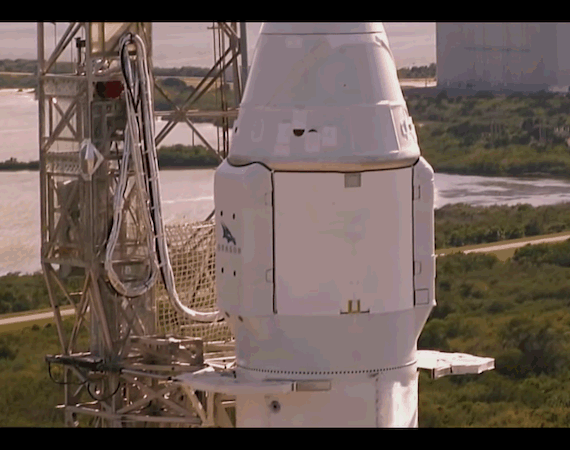Below is a GIF I prepared and used in an earlier question, and the answer seems quite reasonable. With a height to diameter ratio of about 70 m to 3.7 m (nearly 20:1) a weight-conscious design, focused primarily on withstanding axial stresses (e.g. thrust + drag), and allow for some flexing.
But if it bends this much in a breeze, what about in flight?
This answer references the detailed, knowledgable Flightclub simulation of a recent Falcon 9 launch. At one point when the speed of the rocket (wrt Earth's rotating frame presumably) is about 1000 m/s and the pressure must be roughly 0.06 or 0.07 bar at 22km altitude, the angle of attack is estimated to be 4.6 degrees. That would present a crushing-type force, but would it tend to bend the rocket since the fairing is so much wider than the body?
Just how much can tall skinny rockets bend? (roughly, safely)
